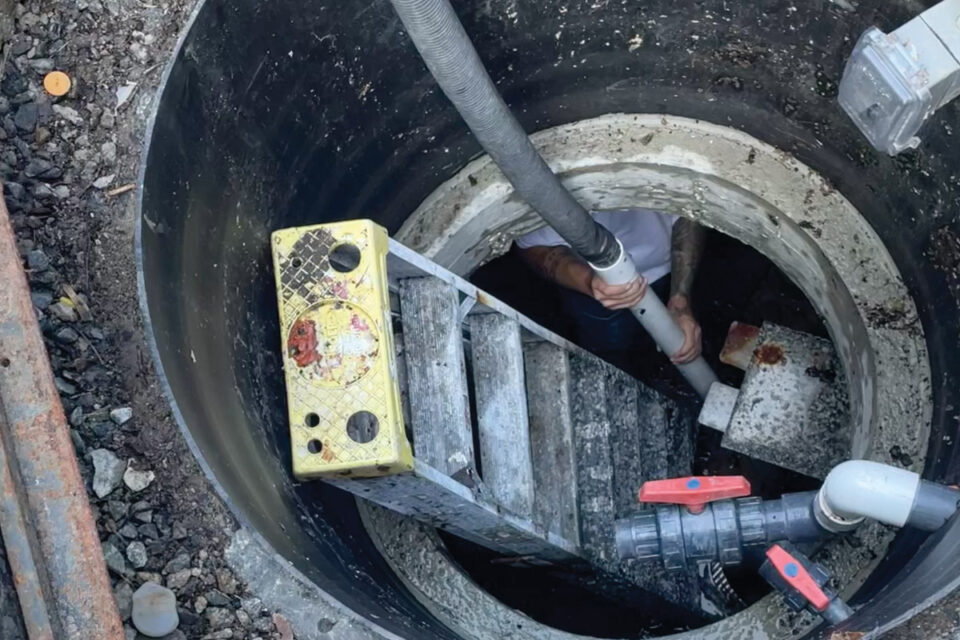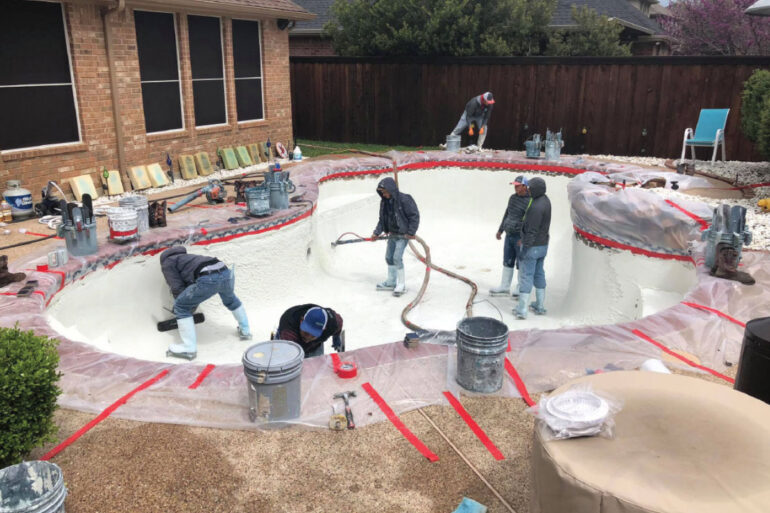Hidden Hazards

Preventing pool problems with surge tank maintenance
When it comes to vanishing edge or infinity pools, regular cleaning isn’t enough. To truly keep these pools operating at their best, owners and pool pros must remember an often-forgotten element: surge tanks.
These tanks hold and recirculate displaced pool water, which means they gather debris, too. “Debris accumulates inside the surge tank just like it does inside a skimmer basket or pump strainer or even at the bottom of the pool,” says JC Escudero, owner of J Designs Pool & Spa in Los Angeles.
Escudero says one of the main issues with surge tanks is their serviceability, especially since they are typically installed out of sight, making them difficult to inspect. “Accessing the tank requires opening either a lid or a manhole, which can be a challenge,” Escudero explains. “Additionally, many surge tanks are poorly designed and lack vacuum ports or debris canisters, making it easy for leaves and other objects to fall inside the tank. These objects will need to be removed during regular maintenance.”

Bob Strange, owner of Strange Pool & Spa Service & Sales Inc. in Garrison, New York, explains that the tanks should be cleaned at a minimum of once a year. If they aren’t, owners can experience cloudy water and clogged filters.
“If the [surge tank] is full of debris, the return water has debris in it,” he says. “These fine debris settle to the pool floor until they are vacuumed into the filter system.”
Strange’s company services pools in the Northeast, and each time they close a pool with a surge tank, they also drain and clean it. If it is possible to get a vacuum into the tank, it will yield the best results in cleaning debris, Strange says.
“It’s important for the pool professional to educate their clients on the need for this type of maintenance,” he says. “Proper maintenance of [surge tanks] can lower chemical usage and the need to service the filter. This will save the client money and unnecessary frustration.”
Though the homeowner will have limited knowledge or input about their pool’s surge tank, Escudero says technicians can suggest the best practices and methods to keep the surge tank clean and serviceable, and the homeowner can help ensure a safe work environment for the technician.
Although surge tanks can slip the minds of many, some are designed to be more easily serviced than others, says Skip Phillips, owner of Skip Phillips LLC and course educator through GENESIS.
Phillips explains that attached tanks are quicker to clean than detached tanks and can be more easily vacuumed. Detached tanks are more sealed off, so you have a debris load being collected in a tank with a lid on it that hinders access, he says.
“Surge tanks usually don’t have a drain plug as they are often located underground or in a containment area where water is delivered to them by gravity,” Escudero says. “This creates a challenge when it comes to servicing the tank, as there are no drains or containers inside, only the suction lines of the pump. Accessing the tank and bringing in cleaning equipment such as a hose, vacuum and brushes can be difficult, and it’s important to ensure all valves are turned on in the correct position before starting the cleaning process.”
The problem, Phillips says, isn’t necessarily keeping debris out of the surge tank; it’s keeping it from going back into the pool every day. To avoid this, the tank should have a filter.
“If you don’t have a filter, which happens all the time, then the debris load in the surge tank, whether attached or detached, is simply chewed up and spit back in the pool, which makes it almost unserviceable,” Phillips says.






